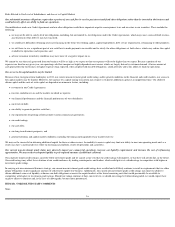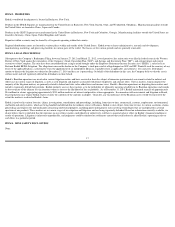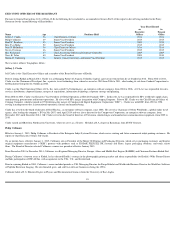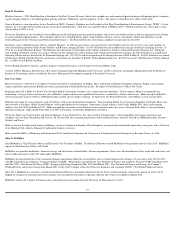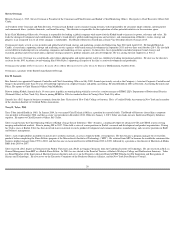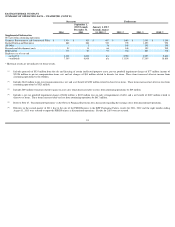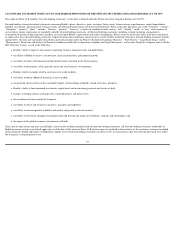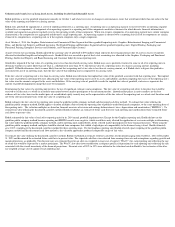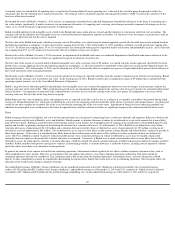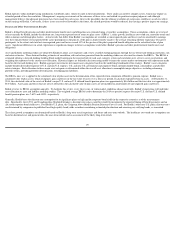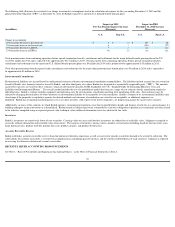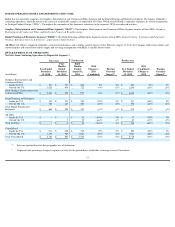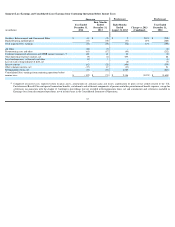Kodak 2014 Annual Report Download - page 27
Download and view the complete annual report
Please find page 27 of the 2014 Kodak annual report below. You can navigate through the pages in the report by either clicking on the pages listed below, or by using the keyword search tool below to find specific information within the annual report.
ITEM 7. MANAGEMENT’S DISCUSSION AND ANALYSIS OF FINANCIAL CONDITION AND RESULTS OF OPERATIONS
The following Management’s Discussion and Analysis of Financial Condition and Results of Operations (“MD&A”) is intended to help the reader understand the results
of operations and financial condition of Kodak for the year ended December 31, 2014, four months ended December 31, 2013, eight months ended August 31, 2013 and
for the year ended December 31, 2012. All references to Notes relate to Notes to the Financial Statements in Item 8. “Financial Statements and Supplementary Data.”
OVERVIEW
Revenue declined $247 million (10.5%) compared to last year. The year over year revenue declines were primarily due to Entertainment Imaging and Commercial Films, as a
result of lower demand due to digital substitution, and Consumer Inkjet Systems, as the size of the installed base of Kodak consumer inkjet printers continues to decline.
Revenue for these businesses was 16% of the total company’s revenues in 2014 versus 21% in 2013 and 26% in 2012.
Kodak continues to invest in the growth of the Commercial Inkjet, Packaging, and Software and Solutions businesses, the commercialization of products in the Micro 3D
Printing business and differentiating technologies within the price-competitive Graphics business. The Graphics business continues to represent roughly half of the company’
s
total revenue. A continued focus on cost reduction across the company augments investment in these growth areas to maintain improvements in sustainable profitability.
The January 1, 2015 reorganization into smaller market-focused business divisions is intended to make the company faster-moving, more competitive and more
entrepreneurial.
CRITICAL ACCOUNTING POLICIES AND ESTIMATES
The accompanying consolidated financial statements and notes to consolidated financial statements contain information that is pertinent to management’s discussion and
analysis of the financial condition and results of operations. The preparation of financial statements in conformity with accounting principles generally accepted in the United
States of America requires management to make estimates and assumptions that affect the reported amounts of assets, liabilities, revenue and expenses, and the related
disclosure of contingent assets and liabilities.
Kodak believes that the critical accounting policies and estimates discussed below involve the most complex management judgments due to the sensitivity of the methods and
assumptions necessary in determining the related asset, liability, revenue and expense amounts. Specific risks associated with these critical accounting policies are discussed
throughout this MD&A, where such policies affect Kodak’s reported and expected financial results. For a detailed discussion of the application of these and other accounting
policies, refer to the Notes to Financial Statements in Item 8.
Revenue Recognition
Kodak's revenue transactions include sales of products (such as components and consumables for use in Kodak and other manufacturers’ equipment, and film based
products), equipment, software, services, integrated solutions, and intellectual property and brand licensing. The timing and the amount of revenue recognized depend
upon a variety of factors, including the specific terms of each agreement and the nature of the deliverables and obligations. For equipment sales, revenue recognition
may depend on completion of installation based on the type of equipment, level of customer specific customization and other contractual terms. In instances in which
the agreement with the customer contains a customer acceptance clause, revenue is deferred until customer acceptance is obtained, provided the customer acceptance
clause is considered to be substantive.
Kodak evaluates each deliverable in an arrangement to determine whether it represents a separate unit of accounting. A deliverable constitutes a separate unit of
accounting when it has stand-alone value to the customer, and if the arrangement includes a general right of return relative to the delivered item(s), delivery or
performance of the undelivered item(s) is considered probable and substantially in Kodak’s control. If these criteria are not met, the arrangement is accounted for as one
unit of accounting and the recognition of revenue occurs upon delivery/completion or ratably as a single unit of accounting over the contractual service period.
For multiple-element arrangements, Kodak allocates to, and recognizes revenue from, the various elements based on their relative selling price, using vendor-
specific objective
evidence, third-party evidence, and best estimated selling price (“BESP”) in accordance with the selling price hierarchy. BESP is established by considering internal factors
such as margin objectives, pricing practices and controls, customer segment pricing strategies and the product life cycle. Consideration is also given to geographies, market
conditions such as competitor pricing strategies and industry technology life cycles.
Revenue allocated to an individual element is recognized when all revenue recognition criteria are met for that element. Kodak limits the amount of revenue recognized
for delivered elements to the amount that is not contingent on the future delivery of products or services, future performance obligations or subject to customer-specified
return or refund privileges.
At the time revenue is recognized, Kodak also records reductions to revenue for customer incentive programs. Such incentive programs include cash and volume discounts
and promotional allowances. For those incentives that require the estimation of sales volumes or redemption rates, such as for volume rebates, Kodak uses historical
experience and both internal and customer data to estimate the sales incentive at the time revenue is recognized. In the event that the actual results of these items differ from
the estimates, adjustments to the sales incentive accruals would be recorded.
26


